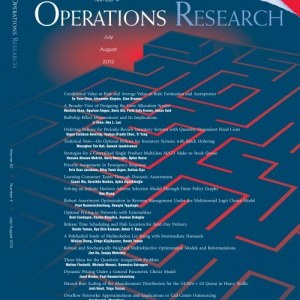
Siegmann, A. and Lucas, A. (2005). Discrete-time financial planning models under loss-averse preferences Operations Research, 53(3):403--414.
-
Affiliated authorsAndre Lucas, Arjen Siegmann
-
Publication year2005
-
JournalOperations Research
We consider a dynamic asset allocation problem formulated as a mean-shortfall model in discrete time. A characterization of the solution is derived analytically under general distributional assumptions for serially independent risky returns. The solution displays risk taking under shortfall, as well as a specific form of time diversification. Also, for a representative stock-return distribution, risk taking increases monotonically with the number of decision moments given a fixed horizon. This is related to the well-known casino effect arising in a downside-risk and expected return framework. As a robustness check, we provide results for a modified objective with a quadratic penalty on shortfall. An analytical solution for a single-stage setup is derived, and numerical results for the two-period model and time diversification are provided. {\textcopyright} 2005 INFORMS.